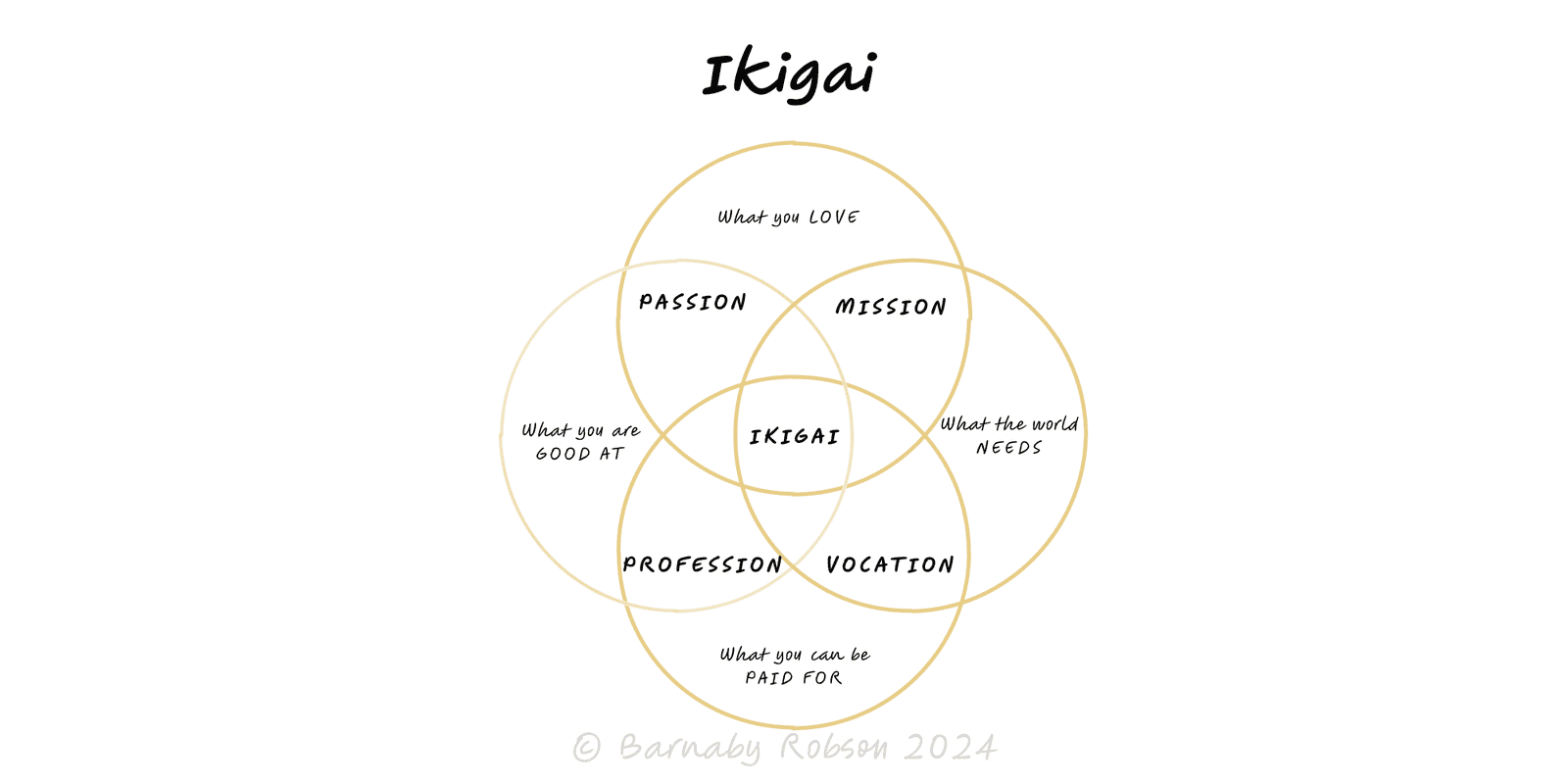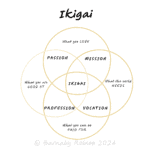Ikigai
Japanese cultural concept (no single author); popularised in the West via the 4-circle diagram

Ikigai roughly means “a reason for being” or “a reason to get up in the morning.”
In its original Japanese sense, it isn’t only about career; it also includes everyday joys, roles and relationships. The popular four-circle Venn (love × skill × need × paid) is a useful Western heuristic, but it oversimplifies. Use it as a design tool, not dogma.
Four lenses (the heuristic)
- Love – activities that energise you intrinsically.
- Skill – domain strengths and comparative advantages.
- Need – problems worth solving for others (users, community, world).
- Pay – viable ways the market (or patrons) rewards the work.
Intersections give signals
- Passion = Love ∩ Skill
- Mission = Love ∩ Need
- Profession = Skill ∩ Pay
- Vocation = Need ∩ Pay
Aim to prototype options in the small region where all four overlap.
Everyday ikigai – micro-sources of meaning (craft pride, service, mastery, connection) compound even when the job is imperfect.
Career/life design – pivots, sabbaticals, portfolio careers.
Role shaping – tilt a current job toward your strengths and valued problems.
Founder clarity – align product vision with personal energy and market reality.
Team development – map individuals’ Love/Skill to tasks and customer needs.
Inventory the four sets
Love: list 10 energising activities; note what feels effortless.
Skill: hard and soft strengths with evidence (wins, feedback, metrics).
Need: specific audiences and problems you care about; write the job-to-be-done.
Pay: viable models (salary, consulting, product, patronage, grants).
Form 3–5 candidate overlaps – short “role theses” like “Teach operators decision science to cut incident rates.”
Prototype, don’t pontificate – run 2-week experiments per thesis (ship a resource, teach a workshop, land a micro-engagement).
Measure fit – energy after sessions, user pull, willingness to pay, learning velocity.
Shape the current job – increase time on Love ∩ Skill tasks that serve a real Need; reduce low-fit work or delegate.
Build a portfolio – accept that multiple small ikigai can coexist (work, family, craft, community).
Set rhythms – daily micro-ikigai (one meaningful act), quarterly review of the four sets, yearly deeper reset.
Single-soulmate myth – expecting one perfect calling; allow plural, evolving fits.
Money denial – ignoring Pay turns purpose into burnout; design a sustainable model.
Market blindness – “Need” must be someone’s need; validate with real users, not vibes.
Heuristic worship – the Venn is a tool; don’t force-fit life into four boxes.
Static snapshot – your loves and skills shift; schedule reviews to refresh the map.
Status traps – chasing prestige over fit; use first-principles metrics (energy, impact, evidence of pull).
